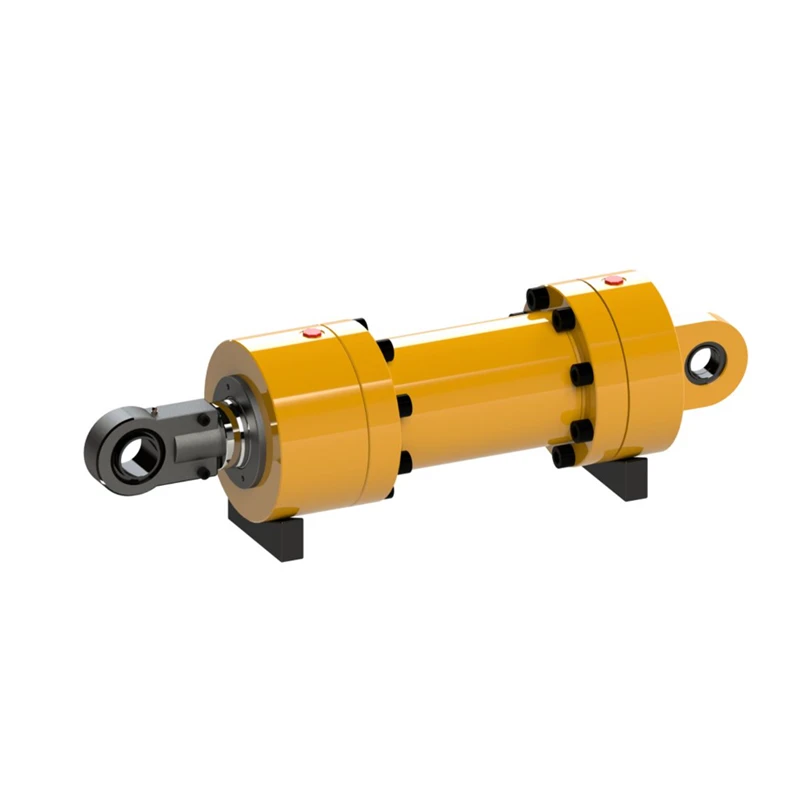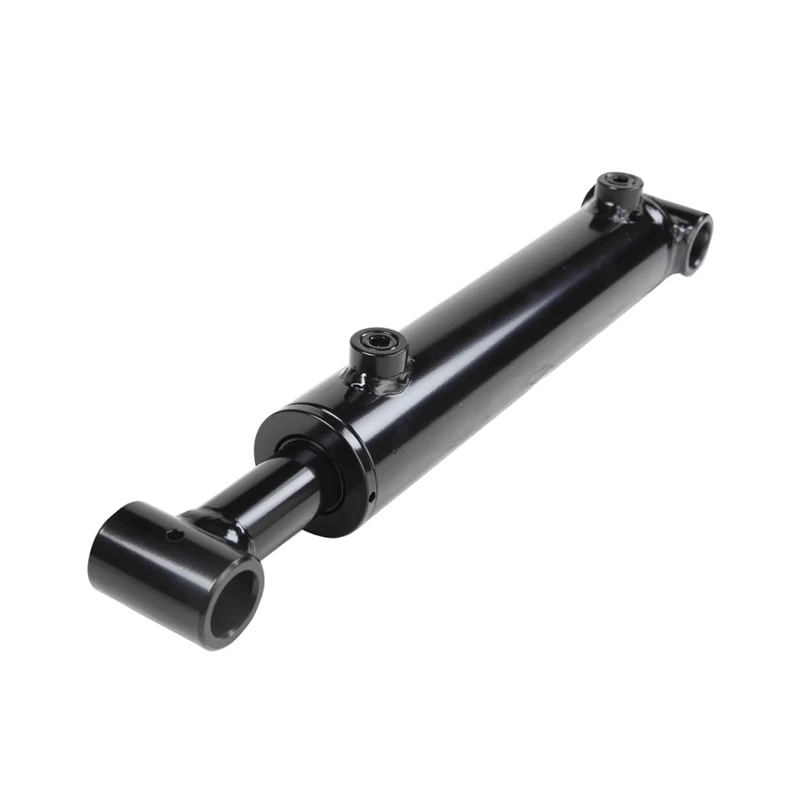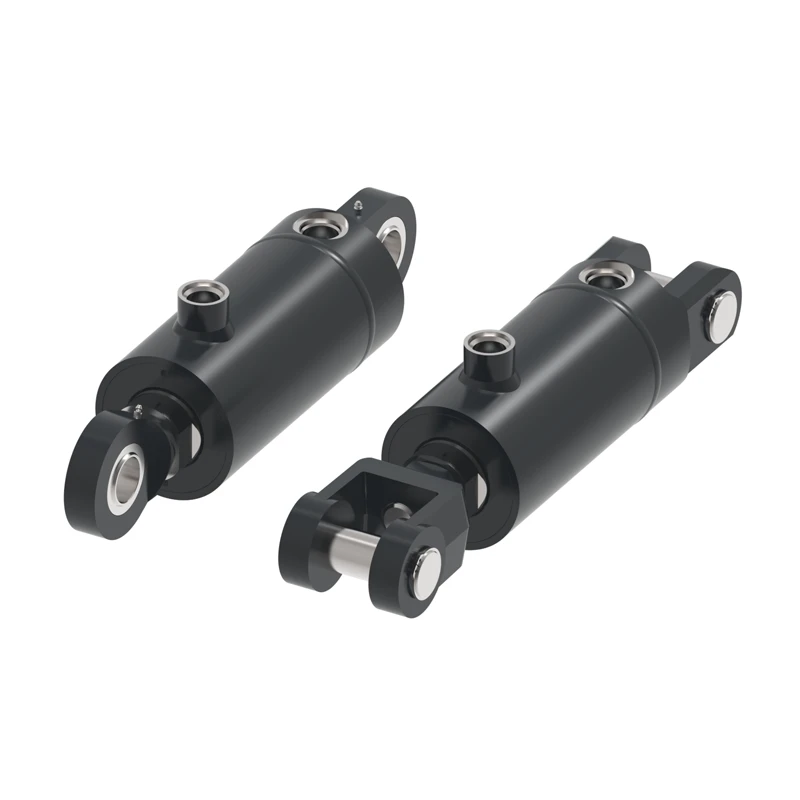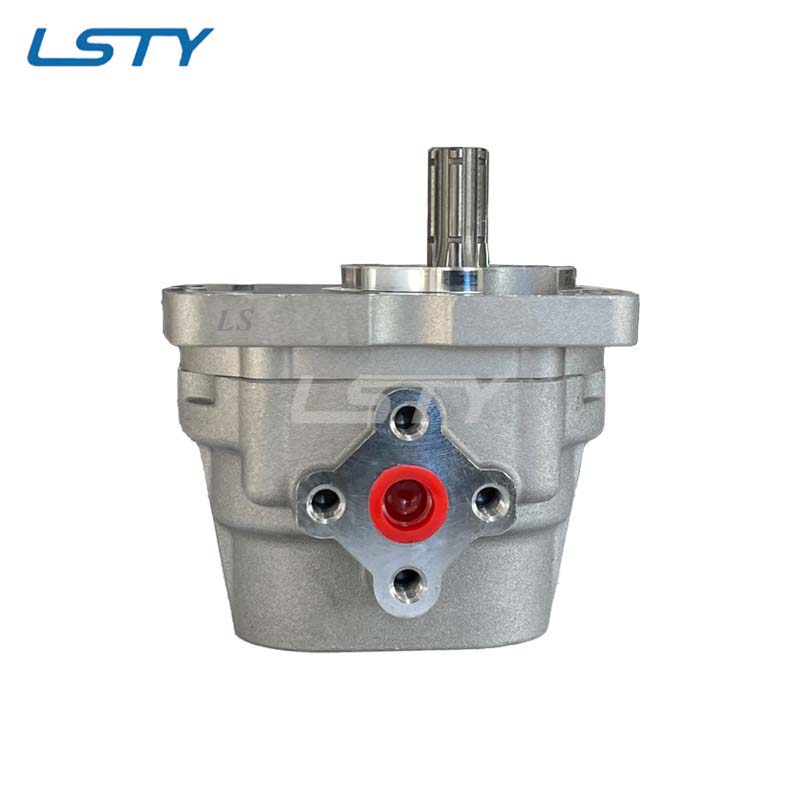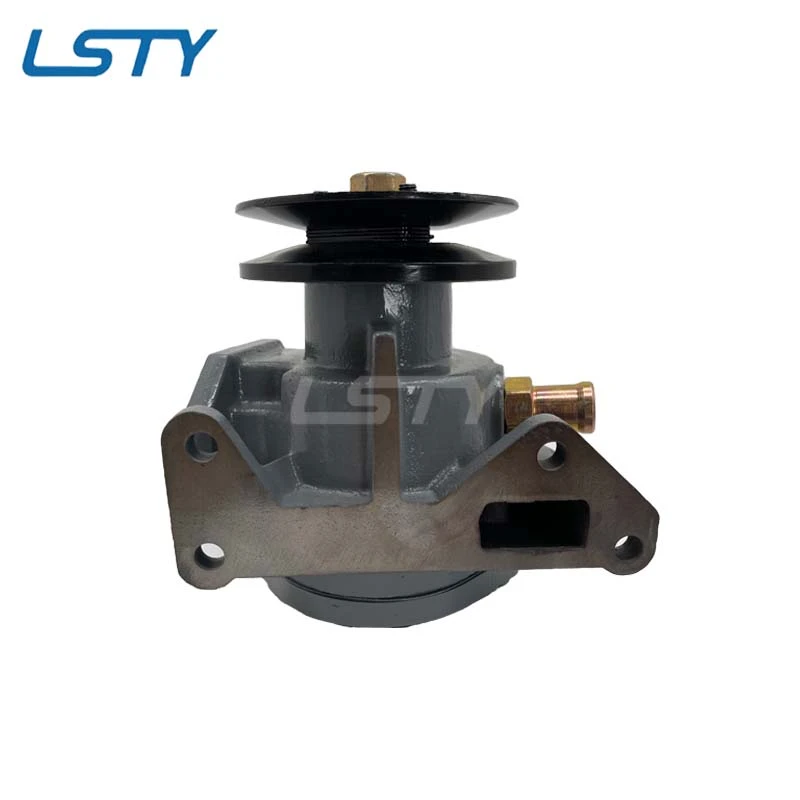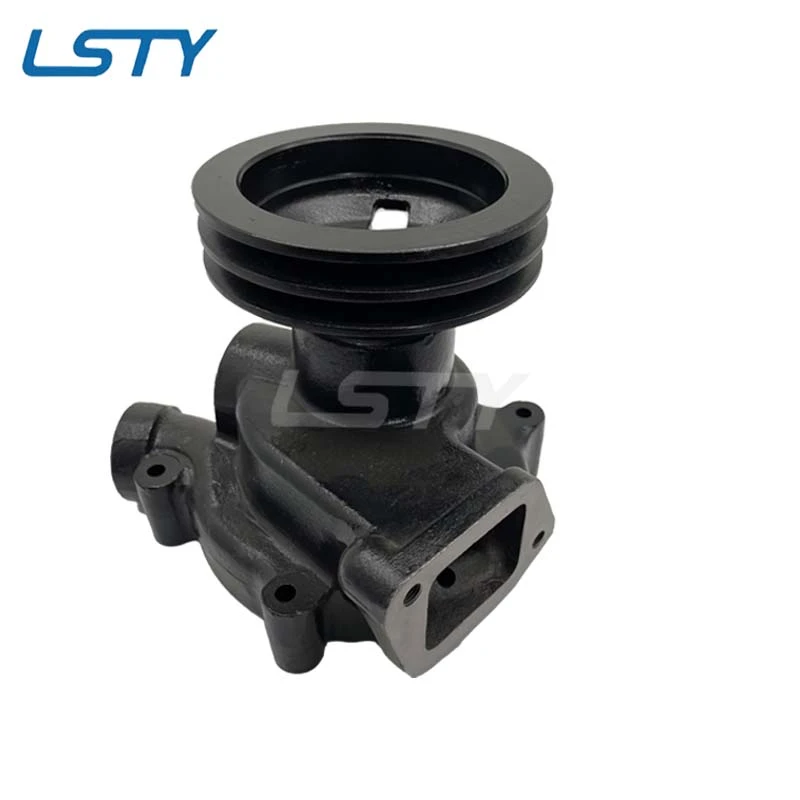In the demanding world of fluid transfer, the choice of pumping technology is paramount to operational efficiency, reliability, and cost-effectiveness. Among the diverse array of pump types, the aluminum gear pump stands out as a critical component, renowned for its lightweight design, excellent corrosion resistance, and high volumetric efficiency. This comprehensive guide delves into the intricate details of aluminum gear pump technology, exploring its industrial significance, technical specifications, diverse applications, and the factors that make it an indispensable asset across various sectors.

Figure 1: A close-up view of a robust aluminum gear pump designed for demanding industrial environments.
Industry Trends and Market Dynamics of Aluminum Gear Pump
The global market for gear pumps, including those manufactured from aluminum, is experiencing steady growth, driven by increasing industrial automation, demand for energy-efficient solutions, and expansion in sectors like petrochemicals, manufacturing, and automotive. Projections indicate a compound annual growth rate (CAGR) of approximately 4-6% for industrial pumps over the next five years, with gear pumps retaining a significant market share due to their reliability and precise flow control. The emphasis on lightweight materials and improved corrosion resistance further fuels the adoption of aluminum gear pump solutions, especially in mobile hydraulic systems and applications where weight reduction is crucial. Innovations in material science, such as advanced aluminum alloys and surface treatments, are enhancing the lifespan and performance envelope of these pumps, positioning them as a preferred choice for future industrial demands.
Introducing the HLCB Constant Overflow Gear Pump Series
At the forefront of innovative fluid handling solutions is the HLCB Constant Overflow Gear Pump series, including models like HLCB-E306HL, HLCB-E308HL, HLCB-E310HL, HLCB-E312HL, and HLCB-E314HL. These pumps are engineered to deliver consistent flow rates and reliable performance, making them ideal for applications requiring precise fluid metering and stable pressure outputs. The use of high-grade aluminum in their construction ensures not only durability but also a lighter footprint, contributing to easier installation and reduced structural load in systems. More details can be found at https://www.autolsty.com/single-gear-pump.html.
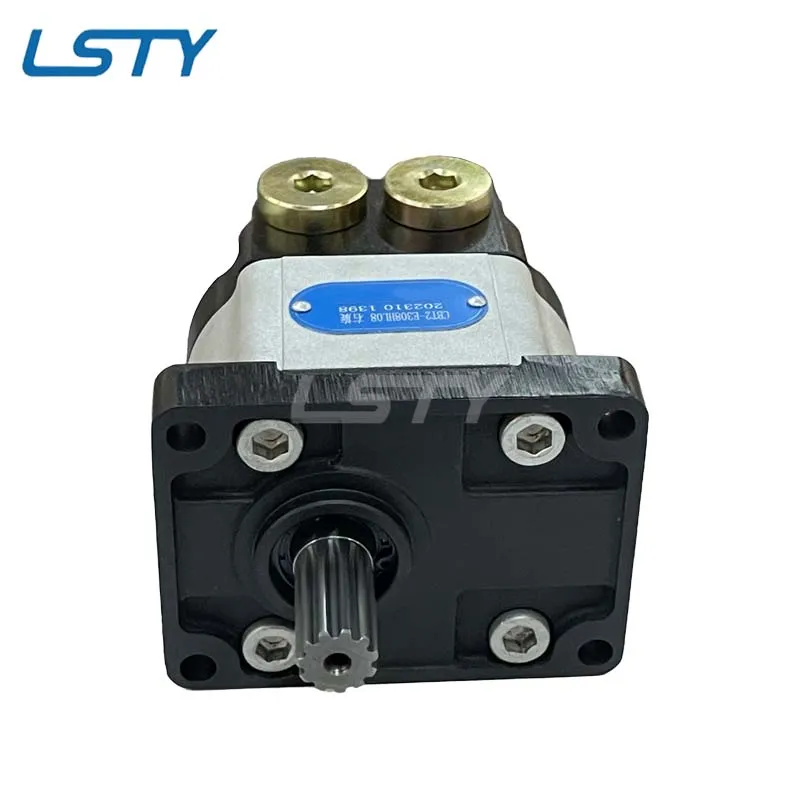
Figure 2: Components of an HLCB Constant Overflow Aluminum Gear Pump, showcasing precision engineering.
Technical Parameters and Specifications
Understanding the technical specifications of an aluminum gear pump is crucial for selecting the right model for a specific application. Key parameters include displacement, pressure rating, speed range, and fluid viscosity handling capabilities. The HLCB series is designed to accommodate a wide range of operational demands.
HLCB Constant Overflow Gear Pump Series Specifications
| Model | Displacement (cm³/rev) | Rated Pressure (MPa) | Max. Speed (rpm) | Max. Flow (L/min) @ 1500rpm | Weight (kg, approx.) |
|---|---|---|---|---|---|
| HLCB-E306HL | 6.3 | 25 | 3000 | 9.45 | 4.5 |
| HLCB-E308HL | 8.0 | 25 | 3000 | 12.0 | 4.7 |
| HLCB-E310HL | 10.0 | 25 | 3000 | 15.0 | 4.9 |
| HLCB-E312HL | 12.5 | 25 | 3000 | 18.75 | 5.1 |
| HLCB-E314HL | 14.0 | 25 | 3000 | 21.0 | 5.3 |
Comparative Analysis: Aluminum Gear Pump vs. Other Materials
While cast iron and stainless steel gear pumps have their merits, aluminum gear pump options offer distinct advantages, particularly in applications where weight, corrosion resistance, and thermal conductivity are key considerations.
| Feature | Aluminum Gear Pump | Cast Iron Gear Pump | Stainless Steel Gear Pump |
|---|---|---|---|
| Material Properties | High strength-to-weight ratio, excellent thermal conductivity, good corrosion resistance (especially anodized). | High strength, good wear resistance, lower cost, prone to rust without coating. | Superior corrosion resistance (acids, alkalis), high temperature tolerance, high cost, heavy. |
| Weight | Lightweight, ideal for mobile and weight-sensitive applications. | Heavy, requiring robust support structures. | Very heavy, similar to cast iron but often denser for comparable strength. |
| Corrosion Resistance | Good for many fluids, excellent with anodized or treated surfaces. Susceptible to strong acids/alkalis. | Limited, requires coating for corrosive environments. Prone to rust. | Excellent, suitable for highly corrosive chemicals and food-grade applications. |
| Cost | Moderate, higher than cast iron but lower than stainless steel. | Lowest initial cost. | Highest initial cost. |
| Applications | Mobile hydraulics, construction equipment, automotive, aerospace, light industrial. | General industrial, lubrication, fuel transfer. | Food & beverage, pharmaceuticals, chemical processing, marine. |
| Heat Dissipation | Excellent, dissipates heat efficiently, reducing fluid degradation. | Good, but less efficient than aluminum. | Moderate, less efficient than aluminum. |

Figure 3: An aluminum gear pump integrated into a hydraulic power unit, demonstrating its compact footprint.
Comprehensive Manufacturing Process of Aluminum Gear Pump
The manufacturing of a high-quality aluminum gear pump involves a precise multi-stage process, ensuring durability, performance, and adherence to stringent industry standards. This intricate journey from raw material to a finished product highlights the blend of advanced metallurgy and precision engineering.
Material Selection & Preparation
The journey begins with the meticulous selection of high-grade aluminum alloys, typically 6061 or 7075 series, known for their excellent strength-to-weight ratio, machinability, and corrosion resistance. For specific applications requiring enhanced durability or chemical resistance, special surface treatments like hard anodizing or specific coatings are planned at this stage. Raw aluminum billets or ingots undergo initial quality checks for material composition and purity, often conforming to ASTM B221 or similar international standards.
Casting or Forging
Depending on the pump's design and required mechanical properties, the aluminum housing and covers are formed either through die casting or forging.
- Die Casting: Offers high volume production with good dimensional accuracy and smooth surface finishes. Molten aluminum is injected into steel molds under high pressure. This method is cost-effective for complex geometries.
- Forging: Provides superior strength and ductility due to the grain refinement process. Aluminum billets are heated and shaped under immense pressure. This method is preferred for components subjected to high stresses.
Precision CNC Machining
This is a critical stage where the cast or forged components achieve their final precise dimensions and surface finishes. Multi-axis CNC (Computer Numerical Control) machines are employed to mill, drill, bore, and tap the pump housing, gear cavities, port connections, and mounting surfaces. Tight tolerances, often within microns, are maintained to ensure minimal internal leakage and optimal volumetric efficiency. Gear profiles for the driving and driven gears are meticulously cut and finished using specialized hobbing and grinding machines. The precision of these components directly impacts the pump's performance and longevity.
Surface Treatment & Finishing
To enhance the pump's resistance to wear, corrosion, and erosion, various surface treatments are applied. Hard anodizing is common for aluminum components, creating a durable, protective oxide layer. Other treatments may include nickel plating, specialized coatings for specific fluid compatibility (e.g., PTFE or ceramic coatings), or polishing to reduce friction and improve fluid flow characteristics. These treatments significantly extend the aluminum gear pump's service life, especially in aggressive media or high-wear applications.
Assembly
In a cleanroom environment, skilled technicians assemble the precisely manufactured components. This involves inserting the gears, shafts, bearings, and seals into the pump housing. Critical attention is paid to bearing alignment, gear mesh clearance, and seal installation to prevent leaks and ensure smooth operation. Proper torqueing of fasteners is essential to maintain structural integrity and prevent distortion.
Quality Control & Testing
Every aluminum gear pump undergoes rigorous quality control and testing before leaving the facility.
- Dimensional Inspection: Using CMM (Coordinate Measuring Machine) and precision gauges to verify all critical dimensions.
- Pressure Testing: Hydrostatic and pneumatic tests to confirm integrity of the pump casing and seals under rated and maximum operating pressures.
- Performance Testing: Each pump is run on a test bench to measure flow rate, pressure output, power consumption, volumetric efficiency, and noise levels. These tests ensure the pump meets or exceeds specified performance curves.
- Leakage Test: Ensures no external or internal leakage occurs during operation.
- Durability/Life Cycle Testing: A sample of pumps undergoes extended operational tests to predict service life and identify potential failure modes.
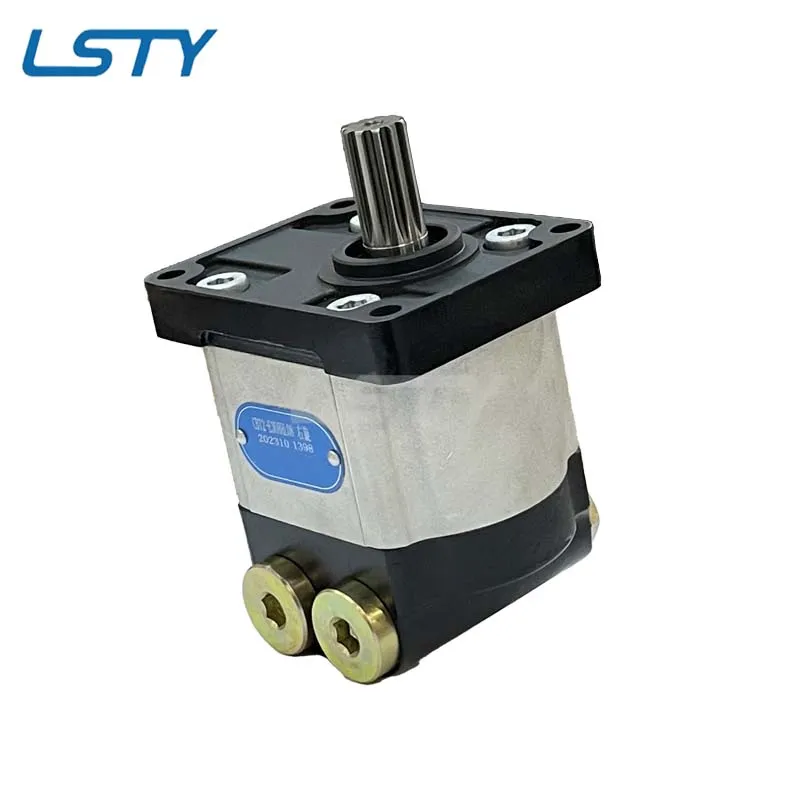
Figure 5: Rigorous performance testing of an aluminum gear pump to ensure adherence to specifications and quality standards.
Application Scenarios and Technical Advantages
The versatility and robust performance of the aluminum gear pump make it suitable for a wide array of demanding applications across various industries. Its unique properties provide significant technical advantages:
Key Application Scenarios:
- Petrochemical Industry: Used for transferring various oils, lubricants, and non-corrosive chemicals where precise flow control and leak prevention are critical. The lightweight nature aids in mobile applications or installations on platforms where weight is a concern.
- Metallurgy: Essential in lubrication systems for heavy machinery, rolling mills, and processing equipment, ensuring continuous and reliable supply of hydraulic fluids and coolants.
- Automotive & Mobile Hydraulics: Widely employed in power steering systems, transmission lubrication, and hydraulic systems of construction equipment (excavators, loaders), agricultural machinery, and forklifts due to their compact size and high power density. Their lightweight nature improves vehicle fuel efficiency.
- Light Industrial & Manufacturing: For fluid transfer in machine tools, printing presses, and industrial cleaning systems. The constant overflow feature of HLCB pumps ensures stable pressure, protecting sensitive components.
- Food Processing (with specific coatings): While standard aluminum gear pump are not food-grade, specialized coated versions can be used for non-abrasive food oils or viscous food ingredients, offering a lighter alternative to stainless steel in certain non-FDA regulated contexts.
- Water Supply & Drainage (Specialized Applications): Though less common for general water transfer, they can be used in specialized water treatment applications requiring precise chemical dosing where the fluid compatibility is ensured.
- Energy Sector: In wind turbine yaw and pitch control systems, and lubrication systems for power generation equipment.
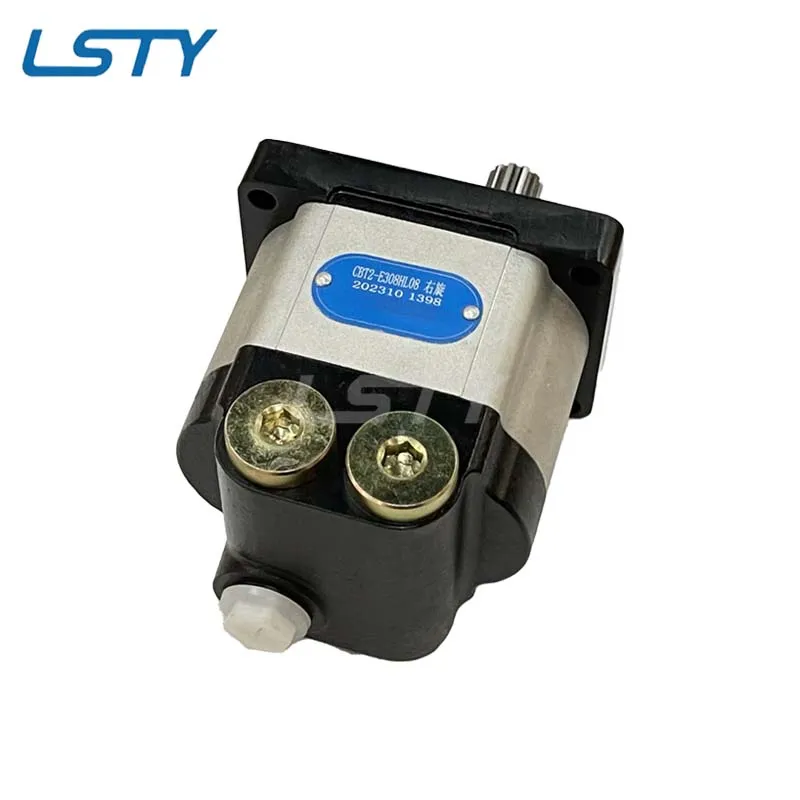
Figure 6: A view of an aluminum gear pump seamlessly integrated into a sophisticated hydraulic manifold, highlighting its compact design and ease of integration.
Technical Advantages:
- Lightweight Design: Aluminum's low density significantly reduces the overall weight of the pump, leading to easier installation, reduced transportation costs, and improved fuel efficiency in mobile applications.
- Excellent Corrosion Resistance: Aluminum alloys, especially when anodized or coated, offer robust resistance to a wide range of chemicals and environmental conditions, prolonging the pump's service life and reducing maintenance.
- High Thermal Conductivity: Aluminum efficiently dissipates heat generated during operation, which helps maintain stable fluid temperatures, extends the life of hydraulic fluids, and reduces the risk of thermal degradation.
- Precision and Efficiency: Modern aluminum gear pump designs, like the HLCB series, boast high volumetric and mechanical efficiencies. This translates to less energy consumption for a given fluid transfer task, leading to significant energy savings over time. For example, a pump with 90% volumetric efficiency delivers 10% more fluid than an 80% efficient pump for the same input, leading to substantial energy cost reductions annually.
- Durability and Longevity: Through advanced manufacturing techniques (like CNC machining of gear teeth) and superior material treatments, aluminum gear pump can withstand continuous operation under high pressures and varying temperatures, ensuring a long operational lifespan and reducing downtime.
- Cost-Effectiveness: While initially more expensive than basic cast iron pumps, the lightweight nature, corrosion resistance, and energy efficiency of aluminum gear pump often lead to a lower total cost of ownership (TCO) over their operational lifetime due to reduced energy bills, maintenance, and replacement costs.
Choosing Your Partner: Manufacturer Comparison and Customization Solutions
Selecting the right manufacturer for your aluminum gear pump needs is as crucial as choosing the pump itself. A reputable manufacturer offers not only high-quality products but also comprehensive support, customization options, and a proven track record.
Key Considerations for Manufacturer Comparison:
- Certifications & Quality Standards: Look for manufacturers with ISO 9001 certification, indicating a robust quality management system. Adherence to international standards like ANSI, CE, and ATEX ensures product safety and compliance.
- Expertise & Experience: A manufacturer with decades of experience in hydraulic components and specialized knowledge in aluminum gear pump design and application will offer superior insights and solutions. Our company has over 20 years of experience serving diverse industrial sectors.
- Customization Capabilities: Standard pumps may not always meet unique application requirements. A strong manufacturer should offer customization in terms of port configurations, seal materials, shaft designs, and mounting options.
- After-Sales Support & Warranty: Comprehensive technical support, readily available spare parts, and a clear warranty policy (e.g., 12-24 months from installation) are indicators of a trustworthy partner.
- Global Reach & Service Network: For international operations, a manufacturer with a global presence or established service network can provide timely support and delivery.
- Innovation & R&D: A manufacturer committed to continuous improvement and R&D will offer cutting-edge solutions that align with evolving industry demands for efficiency and sustainability.
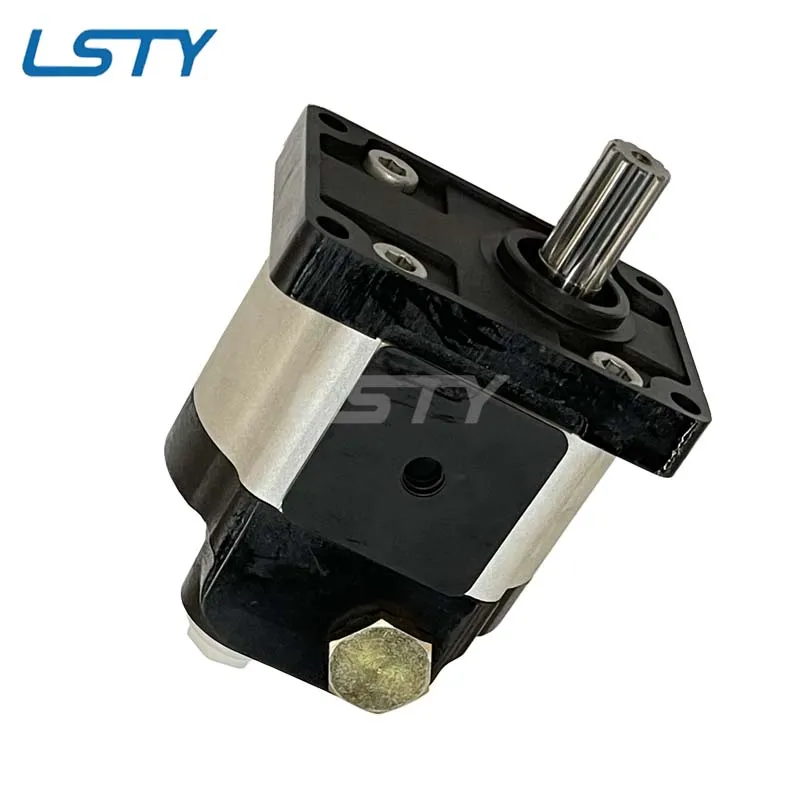
Figure 7: An example of a customized aluminum gear pump setup, demonstrating tailored solutions for unique operational requirements.
Tailored Customization Solutions:
Recognizing that every industrial application has unique demands, we offer extensive customization options for our HLCB aluminum gear pump series. This includes:
- Port Configuration: Adapting inlet/outlet port sizes and orientations to seamlessly integrate with existing hydraulic systems.
- Shaft Extensions: Customizing shaft dimensions, keyways, or splines to match specific motor or drive connections.
- Seal Materials: Providing a range of seal materials (e.g., NBR, FKM, EPDM) to ensure compatibility with various fluids and operating temperatures, enhancing the aluminum gear pump's chemical resistance.
- Mounting Options: Designing custom mounting flanges or brackets for specific installation requirements.
- Pressure Relief Valves: Integrating pre-set or adjustable pressure relief valves directly into the pump housing for simplified system design and enhanced safety.
- Special Coatings: Applying specialized internal or external coatings for extreme corrosion resistance or reduced friction in challenging fluid environments.
Our engineering team works closely with clients to understand their precise needs, providing design recommendations and simulations to ensure the customized aluminum gear pump delivers optimal performance and reliability for their unique application.
Real-World Application Cases and Customer Experience
The practical benefits of aluminum gear pump are best illustrated through real-world applications and direct customer feedback, showcasing their reliability and efficiency in diverse operational contexts.
Case Study 1: Hydraulic System Upgrade for Construction Equipment
Challenge: A leading manufacturer of compact excavators sought to reduce the overall weight of their machines while maintaining robust hydraulic power. Their existing cast iron gear pumps contributed significantly to the machine's curb weight, impacting fuel efficiency and maneuverability.
Solution: We provided a customized HLCB-E312HL aluminum gear pump solution. Its lightweight aluminum construction reduced the pump's weight by over 40% compared to the previous cast iron model, without compromising pressure or flow capabilities. The pump's high volumetric efficiency also led to a measurable reduction in fuel consumption for the hydraulic system.
Outcome: The customer reported a 5% improvement in fuel efficiency across their excavator line and enhanced machine agility. "The aluminum gear pump was a game-changer for our compact designs. It not only met our performance needs but also significantly contributed to our sustainability goals by reducing fuel usage," stated their lead engineer.
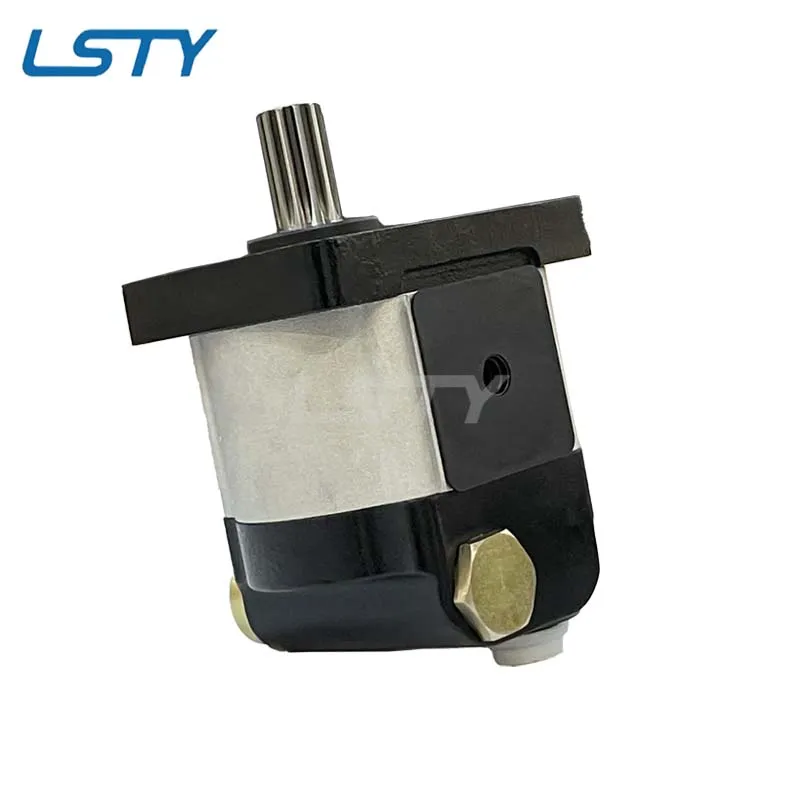
Figure 8: An aluminum gear pump demonstrating its robust performance in a heavy machinery application, ensuring consistent hydraulic power.
Case Study 2: Industrial Lubrication System for Steel Mill
Challenge: A large steel manufacturing plant experienced frequent issues with their lubrication pumps, which struggled with intermittent supply of viscous lubricants, leading to premature wear of critical machinery bearings. Downtime for pump maintenance was costly.
Solution: We recommended and installed several HLCB-E314HL aluminum gear pump units, specifically configured with enhanced seals suitable for high-viscosity industrial lubricants. The pump's constant overflow design ensured a steady, pulsation-free supply of lubricant, even under varying system demands.
Outcome: The plant reported a dramatic reduction in unscheduled downtime related to lubrication system failures. The consistent lubrication extended the lifespan of their machinery bearings by an estimated 25%. "The HLCB aluminum gear pump has proven incredibly reliable. We've seen a noticeable improvement in our machinery's uptime and reduced maintenance burden," commented the plant operations manager.
Trustworthiness: Commitment to Quality, Warranty, and Support
Our commitment to excellence extends beyond product design and manufacturing. We prioritize customer satisfaction through robust quality assurance, transparent policies, and comprehensive support services.
Quality Assurance and Certifications:
All our aluminum gear pump products, including the HLCB series, are manufactured under strict ISO 9001:2015 certified quality management systems. This ensures every stage, from material procurement to final testing, adheres to the highest international standards. We also comply with relevant industry-specific standards such as ANSI B73.1 for chemical pumps (where applicable) and CE directives for European markets, guaranteeing product safety and performance.
Warranty Promise:
We stand behind the quality and reliability of our aluminum gear pump products with a standard 12-month warranty from the date of installation or 18 months from shipment, whichever comes first. This warranty covers manufacturing defects and material failures under normal operating conditions. Extended warranty options are available upon request for specific project requirements.
Delivery and Lead Time:
Our efficient production and supply chain management ensure timely delivery. Standard HLCB aluminum gear pump models typically have a lead time of 4-6 weeks from order confirmation. For customized solutions, lead times are quoted individually based on complexity and component availability, usually ranging from 8-12 weeks. Expedited delivery options can be arranged for urgent requirements.
Customer Support and Technical Assistance:
Our dedicated team of hydraulic engineers and customer service specialists provides unparalleled support. This includes:
- Pre-sales technical consultation and application sizing.
- Installation and commissioning guidance.
- Troubleshooting and maintenance support.
- Availability of genuine spare parts for the entire product lifespan.
- Remote technical assistance and on-site support for critical installations.
We are committed to building long-term partnerships with our clients, ensuring their systems operate efficiently and reliably with our aluminum gear pump solutions.
Professional FAQ: Understanding Your Aluminum Gear Pump
Here are answers to some frequently asked questions regarding aluminum gear pump technology, covering key technical aspects and operational considerations.
1. What types of fluids can an aluminum gear pump handle?
Aluminum gear pump are typically suitable for a wide range of non-corrosive, lubricating fluids such as hydraulic oils, lubricating oils, fuels, and some light chemicals. For abrasive fluids or highly corrosive media, specialized internal coatings or different pump materials (e.g., stainless steel, composite materials) would be recommended to prevent premature wear or chemical degradation.
2. What is the typical operating temperature range for an aluminum gear pump?
The operating temperature range largely depends on the specific aluminum alloy, seal materials, and fluid viscosity. Generally, aluminum gear pump can operate effectively from -20°C to +80°C (-4°F to +176°F). For extreme temperatures, high-temperature seals (like Viton/FKM) and specific alloys are required, sometimes extending the range up to 120°C (248°F) for intermittent operation.
3. How does the "Constant Overflow" feature of HLCB pumps work?
The "Constant Overflow" feature, often achieved through an integrated pressure relief valve or bypass mechanism, ensures that the pump delivers a stable, consistent flow rate and maintains system pressure within desired limits. If the system's demand for fluid decreases or the pressure exceeds a set point, the excess fluid is bypassed internally back to the suction side or reservoir, preventing pressure spikes and ensuring smooth operation, which protects downstream components.
4. What are the common failure modes of an aluminum gear pump and how can they be prevented?
Common failure modes include wear of gears/bearings due to contamination or lack of lubrication, seal leakage, and cavitation damage. Prevention involves regular fluid filtration to ISO cleanliness levels, ensuring proper fluid levels, selecting correct seal materials for the application, maintaining appropriate fluid viscosity, and preventing suction side air entrainment (which causes cavitation). Proper installation and regular preventive maintenance are key.
5. Is an aluminum gear pump suitable for high-pressure applications?
Yes, modern aluminum gear pump are engineered for high-pressure applications. Our HLCB series, for example, is rated for up to 25 MPa (approximately 3600 PSI) continuous operation. The robust design, precision machining, and material strength of high-grade aluminum alloys allow them to withstand significant internal pressures without deformation or leakage.
6. What is the typical maintenance schedule for an aluminum gear pump?
A typical maintenance schedule for an aluminum gear pump involves regular fluid quality checks (every 500-1000 hours), filter replacement (as per system requirements), and visual inspections for leaks or unusual noise/vibration (daily/weekly). Seal replacement is generally recommended every 2-3 years, or based on condition monitoring. Full internal inspection and overhaul are typically performed every 5,000-10,000 operational hours, depending on application severity and fluid cleanliness.
7. Can an aluminum gear pump run dry?
No, gear pumps, including aluminum gear pump, are positive displacement pumps and are not designed to run dry. Running a gear pump without fluid will lead to rapid internal component wear (gears, bearings, seals) due to lack of lubrication and cooling, resulting in irreparable damage. Always ensure the pump is primed and continuously supplied with the specified fluid during operation.
References and Further Reading
For more in-depth understanding of hydraulic pump technology and industry trends, consider the following resources:
Journal of Fluid Power Systems: Provides academic insights into pump efficiency and fluid dynamics. For example, research on "Enhancement of Volumetric Efficiency in Gear Pumps" often details material and design advancements.
Hydraulics & Pneumatics Magazine: A leading industry publication offering articles on new technologies, application case studies, and market analysis related to hydraulic components. (https://www.hydraulicspneumatics.com/)
National Fluid Power Association (NFPA) Publications: NFPA offers standards, technical papers, and statistical data on the fluid power industry in North America. (https://www.nfpa.com/industry-information/industry-resources.htm)
"Fluid Power with Applications" by Anthony Esposito: A foundational textbook for understanding hydraulic systems, including detailed sections on gear pump principles and construction.
Process Industry Forum: A forum discussing various process industry topics, including pump selection and maintenance challenges. (https://www.processindustryforum.com/)
-
Tandem Hydraulic Pump for Multi - Function SystemsNewsJul.16,2025
-
Selecting The Right Hydraulic Motor TypeNewsJul.16,2025
-
How Air Directional Control Valves Power Your Pneumatic WorldNewsJul.16,2025
-
Engine Cooling Pump Bearing Noise CausesNewsJul.16,2025
-
Double-Ended Hydraulic Cylinder in Steel Rolling MillsNewsJul.16,2025
-
Design Optimization for Efficient Metal CastingsNewsJul.16,2025
-
Unveiling the Power and Precision of Hydraulic CylindersNewsJul.16,2025








